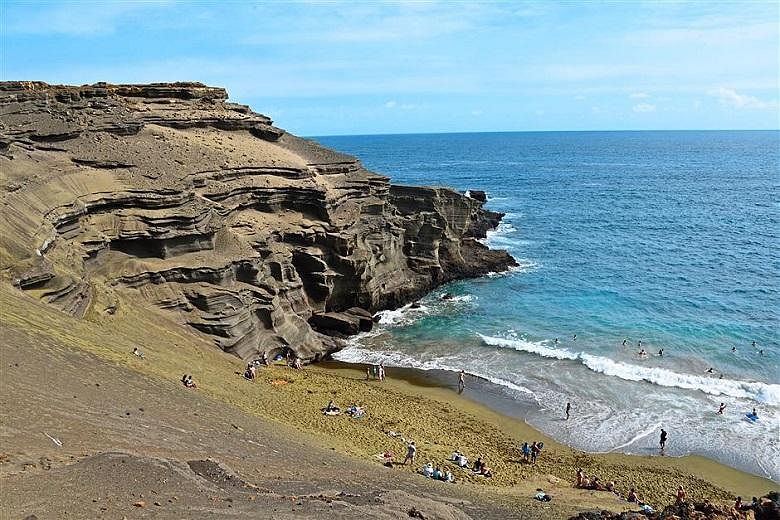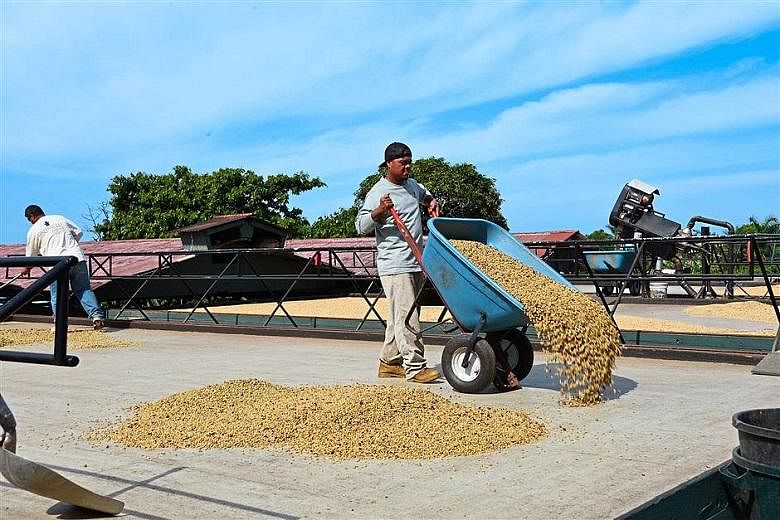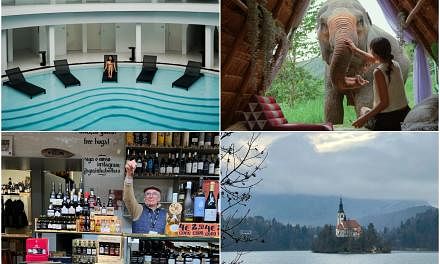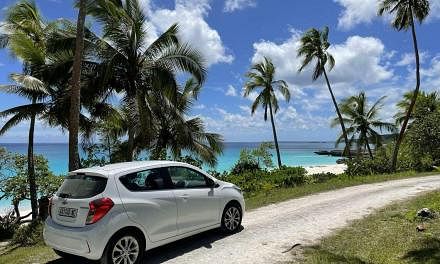(THE STAR/ASIA NEWS NETWORK) - The first encounter with Kona coffee sent our system into haphazard disarray. Literally.
We first sampled the brew on board a catamaran bound for Lanai on our second day in Maui, Hawaii, in the United States, a few years ago. The captain served us freshly brewed Kona coffee, grown only on the Kona coast of the Big Island in Hawaii.
Its aroma engulfed the entire cabin - rich and invigorating, with a tinge of caramel.
I took my first sip, emptied the cup in no time, then spewed everything into the choppy seas a few minutes later. Thereafter, my steadfast tea-drinking husband - he claimed coffee induced headaches - became so enamoured with Kona coffee that it had to accompany every meal; ailments miraculously cured.
We scoured souvenir shops in Maui and returned home with as many Kona coffee bags as we could carry. We were undiscerning to say the least of the authenticity or quality of Kona coffee.
It was not until two years later, on our second trip to Hawaii, that we decided to put Big Island on our map, dedicating a week on the Kona coffee trail.
More than one
The Hawaii islands are an archipelago of eight major islands: Hawaii (aka Big Island), Maui, Kahoolawe, Lanai, Molokai, Oahu, Kauai and Niihau.
Big Island, as its name suggests, is larger than all of these islands combined with an area of 10,430 sq km, which is more than 20 times the size of Langkawi island.
However, the Kona coffee belt is located only along a tiny strip that runs 32km long and 3.2km wide on the west coast of Kailua-Kona, and working on this parcel are more than 600 Kona coffee growers.
The label "Kona coffee" is given only to beans grown in the north and south of Kona on Big Island. Even coffee grown elsewhere on Hawaii cannot be labelled Kona coffee.
Hawaiian laws also require the label to state the content of Kona coffee. A rare commodity and one of the most expensive coffee beans in the world, "100 per cent Kona coffee" can easily cost RM195 (S$66) for 450g. As such, many sell affordable blends of "10 per cent Kona coffee".
The west coast of Big Island is warm and sunny - a stark contrast to the east coast, which has the highest rainfall in Hawaii. Also, the upland slopes of Kona are constantly blanketed by clouds and nourished by rich volcanic soil - creating the perfect climate for harvesting this gourmet Hawaiian coffee bean.

Greenwell Farms provided us with an excellent orientation to the world of Kona coffee.
A gold award winner of the Kona Coffee Council's 2015 Cream of the Crop competition, the company's educational farm tour introduced the Kona coffee-farming process from harvesting coffee cherry and pulping to drying and green bean grading.
On its tasting deck overlooking blooming coffee trees, we sampled various roasts and flavours.
My husband and I came to the conclusion that its peaberry Kona coffee stood out with a robust, full-bodied and tangy flavour. Peaberry is a single, smaller and rounded coffee seed - instead of the usual two - found in a coffee cherry, a phenomenon that occurs in about 5 per cent of the crop. Peaberry Kona coffee is among the most-sought-after with a stronger and fine flavour.
We soon discovered in our Kona coffee farm hop that each farm has its distinct flavour.
According to Hula Daddy, another coffee farm and brand, the elevation, soil, orientation to the sun, drainage, pruning, watering and fertilising all contribute to the coffee taste. Hence even farms located next to each other produce coffees that differ in quality and flavour.
We tried our hand at selecting and picking ripe coffee cherries during the farm tour. Hula Daddy believes that careful picking of only ripe coffee cherries contributes to the coffee taste.
After visiting eight coffee estates, we had to agree with Mark Twain who, in 1866, wrote in a letter to the Sacramento Union: "Kona coffee has a richer flavour than any other, be it grown where it may and call it by what name you please."
We returned home laden with Kona coffee beans, but stocks quickly dwindled from the overzealous consumption of two ardent Kona coffee lovers.
To our dismay, these coffee growers do not ship direct to Malaysia and we'd have to pay exorbitant shipping charges.
"We might as well go to Hawaii and get our coffee," my husband grumbled.
I loved the logic and direction of this conversation. "Just so you know, honey," I tried to keep my voice even and calm, "you're drinking our last drop of Kona coffee."
Beyond Kona coffee
Of course, there is more to Kona that just the coffee.
This is, after all, Hawaii, with swaying palms and crystal clear waters perfect for snorkelling. We came across a honu (sea turtle in Hawaiian) and colourful trigger fish, the humuhumunukunukuapua'a, during our beach snorkelling trips. If these are not spectacular enough, then head to the green sand beach or black sand beach.
Located near scenic South Point, the Papakolea green sand beach is created from silicate deposit of lava called olivine. The drive to South Point is scenic, but it requires a mildly strenuous hike to reach the beach.
Further south, the Punalu'u black sand beach beckons with gleaming black sand made of basalt, created by the explosion of lava coming into contact with the ocean.
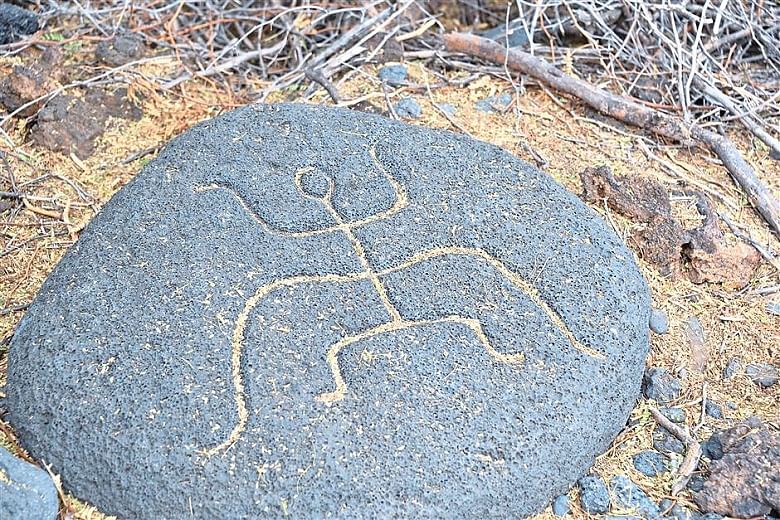
Petroglyphs and historical national parks
We enjoyed exploring petroglyphs and deciphering the ancient rock carvings at Puako Petroglyph Archaeological Preserve, the largest field of petroglyphs discovered with more than 2,000 drawings.
History buffs will enjoy the Puuhonua o Honaunau National Historical Park. In ancient days, to escape the death penalty, defeated warriors and those who broke the sacred laws or kapu would need to reach the Puuhonua, a place of refuge (no harm would come to those who reached the boundaries of Puuhonua).

We visited the sprawling and serene grounds bordering the ocean to view the reconstructed temple, Hale o Keawe, which is guarded by fierce wood-carved statutes called kii.

Hula and cultural traditions
No visit to Hawaii would be complete without watching hula performances. Dinner shows include a luau or Hawaiian feast and Polynesian cultural performance. Public performances are also common.
Our visit coincided with the Japanese new year celebration at the Donkey Mills Arts Centre. We learnt to construct a kadomatsu, a traditional Japanese decoration for the new year, made of pine sprigs, bamboo and plum blossoms tied together with a cord.
Then we witnessed the mochi pounding ceremony and later tried our hand at rolling the mochi.
